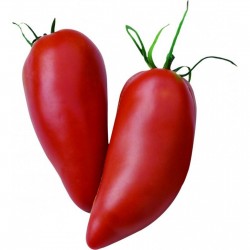Menu
-
Menuالعدمة
- Home
-
التصنيفات
-
-
التصنيفات
-
بذور الخضروات
-
أصناف حسب البلد
- أصناف من أرمينيا
- أصناف من البوسنة والهرسك
- أصناف من كرواتيا
- أصناف من فرنسا
- أصناف من ألمانيا
- أصناف من اليونان
- أصناف من المجر
- أصناف من الهند
- أصناف من إيطاليا
- أصناف من اليابان
- أصناف من شمال مقدونيا
- أصناف من بيرو
- أصناف من روسيا
- أصناف من صربيا
- أصناف من سلوفينيا
- أصناف من اسبانيا
- أصناف من تايلاند
- أصناف من تركيا
- أصناف من الولايات المتحدة الأمريكية
- بذور الطماطم
- بذور الذرة
- عائلة القرع
- الفول الأسرة
- بذور الخيار
- بذور الفلفل
- عائلة الجزرة
- عائلة البصل
- بذور الخس
- عائلة البطاطس
- عائلة الملفوف
- بذور الفجل
- عائلة الشمندر
- بذور البطيخ
- بذور بطيخ
- بذور القرنبيط
- عائلة عباد الشمس
-
أصناف حسب البلد
- بذور الفاكهة
- بذور الفلفل الحار
- بذور عشبة طبية
- تسلق بذور النباتات
- الأشجار - بذور بونساي
- بذور النخيل
- بذور الأعشاب الزينة
- بذور التبغ
-
بذور الخضروات
-
-
-
-
- منتجات جديدة
- التسليم - الدفع
- انشئ حساب
- FAQ
- الصفحة الرئيسية
-
- حزم كبيرة من البذور
- بذور النباتات العملاقة
- بذور الخضروات
- أصناف حسب البلد
- أصناف من أرمينيا
- أصناف من البوسنة والهرسك
- أصناف من كرواتيا
- أصناف من فرنسا
- أصناف من ألمانيا
- أصناف من اليونان
- أصناف من المجر
- أصناف من الهند
- أصناف من إيطاليا
- أصناف من اليابان
- أصناف من شمال مقدونيا
- أصناف من بيرو
- أصناف من روسيا
- أصناف من صربيا
- أصناف من سلوفينيا
- أصناف من اسبانيا
- أصناف من تايلاند
- أصناف من تركيا
- أصناف من الولايات المتحدة الأمريكية
- بذور الطماطم
- بذور الذرة
- عائلة القرع
- الفول الأسرة
- بذور الخيار
- بذور الفلفل
- عائلة الجزرة
- عائلة البصل
- بذور الخس
- عائلة البطاطس
- عائلة الملفوف
- بذور الفجل
- عائلة الشمندر
- بذور البطيخ
- بذور بطيخ
- بذور القرنبيط
- عائلة عباد الشمس
- أصناف حسب البلد
- بذور الفاكهة
- بذور الفلفل الحار
- بذور عشبة طبية
- تسلق بذور النباتات
- الأشجار - بذور بونساي
- بذور الموز
- بذور النخيل
- بذور الأعشاب الزينة
- بذور التبغ
- بذور زهرة
- بذور الصبار
- بذور النباتات المائية
- تعليمات البذر
- قوالب الفاكهة والخضروات
- فطر الفطر
- المصابيح النباتية
- بذور الخيزران
- نباتات الأيورفيدا
- F1 hybrid seeds
- التعبئة والتغليف والاشياء
- نباتات مقاومة للبرد
- منتجات العناية النباتية
- التوابل العضوية
- التسليم - الدفع
- لا دفع باي بال وبطاقة X
Last Product Reviews
Out of the two seeds, one germinated and the other one was dead and floatin...
By
 Riikka H on 07/03/2024
Riikka H on 07/03/2024
Verified Purchase
الأكثر مبيعاً
يوجد 1308 منتجا.
عرض 391-405 من 1308 منتجات

متنوعة من ايطاليا
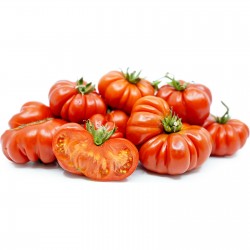
Costoluto Genovese Sic....
السعر
1.65 €
(SKU: VT 39)
Seeds Gallery EU,
5/
5
<h2 class=""><strong>Costoluto Genovese Sic. Heirloom Tomato Seeds</strong></h2>
<h2><span style="color: #ff0000;"><strong>Price for Package of 10 seeds.</strong></span></h2>
<p>The old Italian favorite that has been around since the early 19th century. Costoluto Genovese is a large (plant height up to 200 cm), juicy Italian tomato with an acidic-tart full-tomato flavor well suited for slicing and serving fresh or cooking. In Italy Costoluto Genovese is a favorite for pasta sauces and pastes</p>
<p>The fruit (weight 130-250 g) is rather flattened and quite attractive with their deep ribbing. This variety is a standard in Italy for both fresh eating and preserving, known for its intensely flavorful, deep red flesh.</p>
<p>Costoluto Genovese has been a Mediterranean favorite since at least the early eighteenth century. The key to this mid-season beefsteak’s rich tomato flavor is heat. Grown away from the dry, sun-drenched gardens of the Mediterranean this tomato might disappoint.</p><script src="//cdn.public.n1ed.com/G3OMDFLT/widgets.js"></script>
VT 39 (10 S)

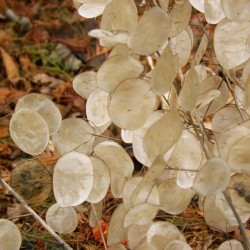
Honesty Silver Pennies...
السعر
2.50 €
(SKU: F 14)
Seeds Gallery EU,
5/
5
<!DOCTYPE html>
<html>
<head>
<meta http-equiv="Content-Type" content="text/html; charset=UTF-8" />
</head>
<body>
<h2><strong>Honesty Silver Pennies Seeds (Lunaria annua)</strong></h2>
<h2><span style="color: #ff0000;"><strong>Price for Package of 10 seeds.</strong></span></h2>
<div>Lunaria annua is an old fashioned dual purpose plant, grown partly for its fragrant bright flowers in spring and summer, but also for its unique seed-heads, oval and translucent, gleaming with an eerie silver light and coveted by dried-flower arrangers. <span style="line-height: 1.5em;">It is properly grown as a biennial, and makes large, well-branched plants in its second year. However, smaller plants can be grown as hardy annuals from an early sowing, with a smaller flower display, but very good compact seed-heads</span></div>
<div>Before the days of sophisticated dried flowers Honesty was particularly popular at Christmas and New Year and, after it had been arranged, would often stay in its vase for months. If it was home-grown it would be cut during a dry spell in September or October, then hung upside down in a dry place until needed. Nowadays most of us would prefer to leave the plants to decorate the garden. There is keener interest in the winter garden and the seed pods of honesty can look wonderful in an otherwise bleak garden.</div>
<div>Honesty blooms in rich, purples, pinks and starry bi-coloured combinations which are almost fluorescent at sunset. It is a vital nectar plant and therefore popular with bees and butterflies, very easy to grow, normally self-seeding itself in sunny or shady positions</div>
<div>Over a long season it produces masses of silvery pods. When dried, the green outer covering peels off to reveal the silvery translucent "silver pennies” or “dollars”.</div>
<div>Sowing: Sow direct in spring to late summer</div>
<div>Seeds can be sown in situ otherwise they can be simply sprinkled on loam-based seed compost, covered with grit and kept in a warm, light place.</div>
<div>Sowing Direct:</div>
<div>Sow thinly outdoors directly where they are to flower, in drills 3mm (1/8in) deep. 30cm (12in) apart. Keep the soil damp until germination takes place and if the seedlings become crowded, thin out to 15cm (6in) apart. Cover the seed lightly and water well.</div>
<div>Sowing Indoors:</div>
<div>Sow the large seeds one to a module compartment or in separate pots – where they can develop individually and be planted out without root disturbance. Use a loam-based seed compost, cover with grit and kept in a warm, light place. <span style="line-height: 1.5em;">Honesty develops thick storage roots, almost like tubers, and, in common with other brassicas, has deep tap roots. Keeping them in pots for any length of time prevents the roots developing properly and, if plants are not put out promptly, they will dwindle. </span><span style="line-height: 1.5em;">Prepare the planting hole with plenty of good home-made compost or leaf-mould. Plant out when all frosts have gone.</span></div>
<div>Cultivation:</div>
<div>Lunaria annua needs no pampering; it will cope in most situations and seems happiest growing among other plants. Grow in fertile, moist but well-drained soil. It prefers partial shade but will tolerate full sun. In common with most brassicas it prefers lime and resents peat or very acidic conditions. Avoid overfeeding and do not use manure.</div>
<div>Dried Flowers:</div>
<div>The key to getting good “silver pennies” is to make sure that the seed pods are perfectly dry. Cut the stems bearing seed pods and hang in bunches upside down in a cool airy room to dry. Once dry, gently remove the outer seed casing before using them for floral decoration.</div>
<div>Collecting Seed</div>
<div>Spread out the flower heads on a piece of drawing paper when they are dry and crisp. Each disc is composed of twin circular plates locked together and enclosing three large flat seeds. These are also disc-shaped <span style="line-height: 1.5em;">At the top of each case is a tiny protuberance that you pull like a ring-pull on a can to peel off one layer. The three seeds stick to this thin skin, leaving the backing-sheet clean and translucently silver, still attached to the stalk.</span></div>
<div>Plant Uses:</div>
<div>Cottage/Informal Garden, Flower Arranging, Flowers Borders and Beds. Butterfly and Wildflower Gardens. <span style="line-height: 1.5em;">Origin: </span><span style="line-height: 1.5em;">although not a true native of the British Isles. Lunaria annua is originally of European origin, Lunaria annua is common in gardens and it is often found naturalised as a garden escapee.</span></div>
<div>Nomenclature <span style="line-height: 1.5em;">The genus name Lunaria is derived from the Latin "lun (a)" meaning "moon" pertaining to the big round fruits of the plant. The species name annua is from the Latin "annu" meaning "year". The plant is typically biennial, however. </span><span style="line-height: 1.5em;">A member of the Brassicaceae or Cruciferae, also known as the crucifers, the mustard family or cabbage family is a family of flowering plants. Cruciferae is an older name, meaning "cross-bearing", because the four petals of their flowers are reminiscent of a cross.</span></div>
<div>Flowers: Lilac / Pink in April to July</div>
<div>Height: 60-90cm (24-36)</div>
<div>Spacing: 38-45cm (15-18in)</div>
<div>
<p>Position: Full Sun to Partial Shade</p>
</div>
</body>
</html>
F 14


نبات مقاوم للبرد والصقيع
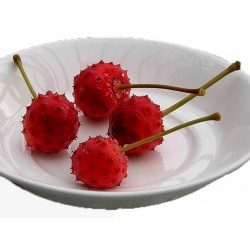
Kousa dogwood Seeds Edible...
السعر
1.95 €
(SKU: V 77)
Seeds Gallery EU,
5/
5
<meta http-equiv="Content-Type" content="text/html; charset=UTF-8" />
<h2>Kousa dogwood Seeds Edible Fruits (Cornus kousa)</h2>
<h2><span style="color: #ff0000;"><strong>ثمن عبوة 5 بذور.</strong></span></h2>
<p>The Kousa dogwood (Cornus kousa or Benthamidia kousa) is a small deciduous tree 8–12 m (26–39 ft) tall, native to eastern Asia. Like most dogwoods, it has opposite, simple leaves, 4–10 cm long. The tree is extremely showy when in bloom, but what appear to be four-petalled white flowers are actually bracts spread open below the cluster of inconspicuous yellow-green flowers. The blossoms appear in late spring, weeks after the tree leafs out. The Kousa dogwood is sometimes also called "Chinese dogwood", Korean Dogwood, or Japanese dogwood.</p>
<p><strong>Characteristics</strong></p>
<p>The kousa dogwood can be distinguished from the closely related flowering dogwood (Cornus florida) of eastern North America by its more upright habit, flowering about a month later, and having pointed rather than rounded flower bracts.</p>
<p>The fruit is a globose pink to red compound berry 2–3 cm in diameter, though these berries tend to grow larger towards the end of the season and some berry clusters that do not fall from the tree surpass 4 cm. <strong>It is edible, a sweet and delicious</strong> addition to the tree's ornamental value. <strong>The fruit is sometimes used for making wine.</strong></p>
<p>It is resistant to the dogwood anthracnose disease, caused by the fungus Discula destructiva, unlike C. florida, which is very susceptible and commonly killed by it; for this reason, C. kousa is being widely planted as an ornamental tree in areas affected by the disease. A number of hybrids between C. kousa and C. florida have also been selected for their disease resistance and good flower appearance.</p>
<p>Fall foliage is a showy red color.</p>
<table cellspacing="0" cellpadding="0" border="1">
<tbody>
<tr>
<td colspan="2" width="100%" valign="top">
<p><span style="color: #008000;"><strong>Sowing Instructions</strong></span></p>
</td>
</tr>
<tr>
<td valign="top" nowrap="nowrap">
<p><span style="color: #008000;"><strong>Propagation:</strong></span></p>
</td>
<td valign="top">
<p><span style="color: #008000;">Seeds</span></p>
</td>
</tr>
<tr>
<td valign="top" nowrap="nowrap">
<p><span style="color: #008000;"><strong>Pretreat:</strong></span></p>
</td>
<td valign="top">
<p><span style="color: #008000;">soak in water for 24 hours</span></p>
</td>
</tr>
<tr>
<td valign="top" nowrap="nowrap">
<p><span style="color: #008000;"><strong>Stratification:</strong></span></p>
</td>
<td valign="top">
<p><span style="color: #008000;">about 3-4 months in a moist substrate at 2-5 ° C in a refrigerator or cold house</span></p>
</td>
</tr>
<tr>
<td valign="top" nowrap="nowrap">
<p><span style="color: #008000;"><strong>Sowing Time:</strong></span></p>
</td>
<td valign="top">
<p><span style="color: #008000;">all year round </span></p>
</td>
</tr>
<tr>
<td valign="top" nowrap="nowrap">
<p><span style="color: #008000;"><strong>Sowing Depth:</strong></span></p>
</td>
<td valign="top">
<p><span style="color: #008000;">cover only slightly with substrate 0,5 cm</span></p>
</td>
</tr>
<tr>
<td valign="top" nowrap="nowrap">
<p><span style="color: #008000;"><strong>Sowing Mix:</strong></span></p>
</td>
<td valign="top">
<p><span style="color: #008000;">Coir or sowing mix + sand or perlite</span></p>
</td>
</tr>
<tr>
<td valign="top" nowrap="nowrap">
<p><span style="color: #008000;"><strong>Germination temperature:</strong></span></p>
</td>
<td valign="top">
<p><span style="color: #008000;">15-20 ° C +</span></p>
</td>
</tr>
<tr>
<td valign="top" nowrap="nowrap">
<p><span style="color: #008000;"><strong>Location:</strong></span></p>
</td>
<td valign="top">
<p><span style="color: #008000;">bright + keep constantly moist not wet</span></p>
</td>
</tr>
<tr>
<td valign="top" nowrap="nowrap">
<p><span style="color: #008000;"><strong>Germination Time:</strong></span></p>
</td>
<td valign="top">
<p><span style="color: #008000;">2-6 weeks</span></p>
</td>
</tr>
<tr>
<td valign="top" nowrap="nowrap">
<p><span style="color: #008000;"><strong>Watering:</strong></span></p>
</td>
<td valign="top">
<p><span style="color: #008000;"> in the growing season richly water</span></p>
</td>
</tr>
<tr>
<td valign="top" nowrap="nowrap"> </td>
<td valign="top">
<p><br /><span style="color: #008000;"><em>Copyright © 2012 Seeds Gallery - Saatgut Galerie - Galerija semena. </em><em>All Rights Reserved.</em></span></p>
</td>
</tr>
</tbody>
</table>
V 77 (5 S)


لا يمكن دفع هذا المنتج باستخدام PayPal أو البطاقة

Shirley Poppy Seeds Mixed...
السعر
1.95 €
(SKU: MHS 43)
Seeds Gallery EU,
5/
5
<div id="idTab1" class="rte">
<h2><strong>Shirley Poppy Seeds Mixed Colors, Decorative, Ornamental</strong></h2>
<h2><span style="color: #ff0202;"><strong>Price for a Package of 200 seeds.</strong></span></h2>
<p>Shirley Poppy (Papaver Rhoeas) - The Shirley Poppy comes from Shirley, England, where in the 1880s, a local vicar carefully selected and hybridized Poppies in his own wild flower garden. Over many years he obtained a strain of Poppies ranging in colors from white to pale lilac to pink and red, and unlike the wild Poppies these had no dark blotches at the base of the petals. Over the years, further wildflower Poppy selection has created the semi-double and double forms, as well as flowers with a ring of contrasting color around the edge called the picotee form. Easily grown from Shirley Poppy seeds, gardeners enthusiastically grow this variety for the wonderful display of diverse color and forms. How to Grow Poppies: Directly sow Poppy seeds in early spring before frosts have finished. Shirley Poppies grow best in loose soil that drains well. Press the flower seeds firmly into the soil and keep the soil moist until germination.<br /><br />Flower Specifications<br /><br /> Season: Annual<br /> USDA Zones: 3 - 9<br /> Height: 12 - 15 inches<br /> Bloom Season: Summer<br /> Bloom Color: Mix<br /> Environment: Full sun<br /> Soil Type: Loose, well-drained, pH 6.1 - 7.3<br /> Deer Resistant: Yes<br /><br />Planting Directions<br /><br /> Temperature: 55 - 60F<br /> Average Germ Time: 21 - 28 days<br /> Light Required: Yes<br /> Depth: Do not cover the seed but press into the soil<br /> Moisture: Keep seeds moist until germination<br /> Plant Spacing: 12 inches</p>
</div>
MHS 43 (200 S)

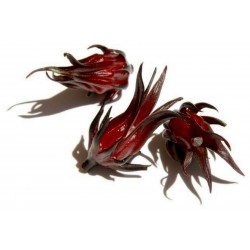
Roselle Seeds - Edible and...
السعر
2.75 €
(SKU: MHS 19)
Seeds Gallery EU,
5/
5
<div>
<h2><strong>Roselle Seeds - edible and tasty (Hibiscus sabdariffa)</strong></h2>
<h2><span style="color:#ff0000;"><strong>Price for Package of 10 seeds.</strong></span></h2>
<p>The roselle (Hibiscus sabdariffa) is a species of Hibiscus native to the Old World tropics, used for the production of bast fibre and as an infusion. It is an annual or perennial herb or woody-based subshrub, growing to 2–2.5 m (7–8 ft) tall. The leaves are deeply three- to five-lobed, 8–15 cm (3–6 in) long, arranged alternately on the stems.</p>
</div>
<p>The flowers are 8–10 cm (3–4 in) in diameter, white to pale yellow with a dark red spot at the base of each petal, and have a stout fleshy calyx at the base, 1–2 cm (0.39–0.79 in) wide, enlarging to 3–3.5 cm (1.2–1.4 in), fleshy and bright red as the fruit matures. It takes about six months to mature.</p>
<p><span><strong>Names</strong></span></p>
<p><span>The roselle is known as the rosella or rosella fruit in Australia. It is also known as 'Belchanda' among Nepalese, Tengamora among Assamese and "mwitha" among Bodo tribals in Assam, চুকর Chukor in Bengali, Gongura in Telugu, Pundi in Kannada, Ambadi in Marathi, LalChatni or Kutrum in Mithila] Mathipuli in Kerala, chin baung in Burma, กระเจี๊ยบแดง KraJiabDaeng in Thailand, ສົ້ມ ພໍດີ som phor dee in Lao PDR, bissap in Senegal, Guinea Bissau, Mali, Burkina Faso, Ghana, Benin and Niger, the Congo and France, dah or dah bleni in other parts of Mali, wonjo in the Gambia, zobo in western Nigeria (the Yorubas in Nigeria call the white variety Isapa (pronounced Ishapa)), Zoborodo in Northern Nigeria, Chaye-Torosh in Iran, karkade (كركديه; Arabic pronunciation: [ˈkarkade])[dubious – discuss] in Egypt, Saudi Arabia, and Sudan, omutete in Namibia, sorrel in the Caribbean and in Latin America, Flor de Jamaica in Mexico, Saril in Panama, grosella in Paraguay and vinagreira, caruru-azedo or quiabo-roxo in Brazil. Rosela in Indonesia, asam belanda[1] in Malaysia. In Chinese it is 洛神花 (Luo Shen Hua) . In Zambia the plant is called lumanda in ciBemba, katolo in kiKaonde, or wusi in chiLunda.</span></p>
<p><span><strong>Uses</strong></span></p>
<p><span>The plant is considered to have antihypertensive properties. In some places, the plant is primarily cultivated for the production of bast fibre from the stem of the plant. The fibre may be used as a substitute for jute in making burlap.[2] Hibiscus, specifically Roselle, has been used in folk medicine as a diuretic, mild laxative, and treatment for cardiac and nerve diseases and cancer.[3]</span></p>
<p><span>The red calyces of the plant are increasingly exported to America and Europe, where they are used as food colourings. Germany is the main importer. It can also be found in markets (as flowers or syrup) in some places such as France, where there are Senegalese immigrant communities. The green leaves are used like a spicy version of spinach. They give flavour to the Senegalese fish and rice dish thiéboudieune. Proper records are not kept, but the Senegalese government estimates national production and consumption at 700 t (770 short tons) per year. Also in Burma their green leaves are the main ingredient in making chin baung kyaw curry.</span></p>
<p><span>In East Africa, the calyx infusion, called "Sudan tea", is taken to relieve coughs. Roselle juice, with salt, pepper, asafoetida and molasses, is taken as a remedy for biliousness.</span></p>
<p><span>The heated leaves are applied to cracks in the feet and on boils and ulcers to speed maturation. A lotion made from leaves is used on sores and wounds. The seeds are said to be diuretic and tonic in action and the brownish-yellow seed oil is claimed to heal sores on camels. In India, a decoction of the seeds is given to relieve dysuria, strangury and mild cases of dyspepsia. Brazilians attribute stomachic, emollient and resolutive properties to the bitter roots.[4]</span></p>
<p><span><strong>Leafy vegetable/Greens</strong></span></p>
<p><span>In Andhra cuisine, Hibiscus cannabinus, called Gongura, is extensively used. The leaves are steamed along with lentils and cooked with Dal. The other unique dish prepared is gongura pachadi, it is prepared by mixing fried leaves with spices and made into a Gongura Pacchadi, the most famous dish of Andhra cuisine and is often described as king of all foods of Andhra ethnics(andhrulu)</span></p>
<p><span>In Burmese cuisine, called chin baung ywet (lit. sour leaf), the roselle is widely used and considered an affordable vegetable for the population. It is perhaps the most widely eaten and popular vegetable in Burma.[5] The leaves are fried with garlic, dried or fresh prawns and green chili or cooked with fish. A light soup made from roselle leaves and dried prawn stock is also a popular dish.</span></p>
<p><span><strong>Beverage</strong></span></p>
<p><span>Cuisine: Among the Bodo tribals of Bodoland, Assam (India) the leaves of both hibiscus sabdariffa and hibiscus cannabinus are cooked along with chicken, fish or pork, one of their traditional cuisines</span></p>
<p><span>In the Caribbean sorrel drink is made from sepals of the roselle. In Malaysia, roselle calyces are harvested fresh to produce pro-health drink due to high contents of vitamin C and anthocyanins. In Mexico, 'agua de Flor de Jamaica' (water flavored with roselle) frequently called "agua de Jamaica" is most often homemade. Also, since many untrained consumers mistake the calyces of the plant to be dried flowers, it is widely, but erroneously, believed that the drink is made from the flowers of the non-existent "Jamaica plant". It is prepared by boiling dried sepals and calyces of the Sorrel/Flower of Jamaica plant in water for 8 to 10 minutes (or until the water turns red), then adding sugar. It is often served chilled. This is also done in Saint Kitts and Nevis, Guyana, Antigua, Barbados, St. Lucia, Dominica, Grenada, Jamaica and Trinidad and Tobago where it is called 'sorrel'. The drink is one of several inexpensive beverages (aguas frescas) commonly consumed in Mexico and Central America, and they are typically made from fresh fruits, juices or extracts. A similar thing is done in Jamaica but additional flavor is added by brewing the tea with ginger and adding rum. It is a popular drink of the country at Christmas time. It is also very popular in Trinidad & Tobago but cinnamon, cloves and bay leaves are preferred to ginger. In Mali, Senegal, The Gambia, Burkina Faso and Benin calyces are used to prepare cold, sweet drinks popular in social events, often mixed with mint leaves, dissolved menthol candy, and/or various fruit flavors. The Middle Eastern and Sudanese drink "Karkade"(كركديه) is a cold drink made by soaking the dried Karkade flowers in cold water over night in a refrigerator with sugar and some lemon or lime juice added.It is then consumed with or without ice cubes after the flowers have been strained.In Lebanon, sometimes toasted pine nuts are tossed into the drink.</span></p>
<p><span>With the advent in the U.S. of interest in south-of-the-border cuisine, the calyces are sold in bags usually labeled "Flor de Jamaica" and have long been available in health food stores in the U.S. for making a tea that is high in vitamin C. This drink is particularly good for people who have a tendency, temporary or otherwise, toward water retention: it is a mild diuretic.</span></p>
<p><span>In addition to being a popular homemade drink, Jarritos, a popular brand of Mexican soft drinks, makes a Flor de Jamaica flavored carbonated beverage. Imported Jarritos can be readily found in the U.S.</span></p>
<p><span>In the UK the dried calyces and ready-made sorrel syrup are widely and cheaply available in Caribbean and Asian grocers. The fresh calyces are imported mainly during December and January in order to make Christmas and New Year infusions, which are often made into cocktails with additional rum. They are very perishable, rapidly developing fungal rot, and need to be used soon after purchase – unlike the dried product, which has a long shelf-life.</span></p>
<p><span>In Africa, especially the Sahel, roselle is commonly used to make a sugary herbal tea that is commonly sold on the street. The dried flowers can be found in every market. Roselle tea is also quite common in Italy where it spread during the first decades of the 20th century as a typical product of the Italian colonies. The Carib Brewery Trinidad Limited, a Trinidad and Tobago brewery, produces a Shandy Sorrel in which the tea is combined with beer.</span></p>
<p><span>In Thailand, Roselle is generally drunk as a cool drink,[6] but also as a tea, believed to also reduce cholesterol. It can also be made into a wine.</span></p>
<p><span>Hibiscus flowers are commonly found in commercial herbal teas, especially teas advertised as berry-flavoured, as they give a bright red colouring to the drink.</span></p>
<p><span>Rosella flowers are sold as Wild Hibiscus flowers in syrup in Australia as a gourmet product. Recipes include filling them with goats cheese, serving them on baguette slices baked with brie, & placing one plus a little syrup, in a champagne flute before adding the champagne when the bubbles cause the flower to open.</span></p>
<p><span><strong>Jam and preserves</strong></span></p>
<p><span>In Nigeria, rosella jam has been made since Colonial times and is still sold regularly at community fetes and charity stalls. It is similar in flavour to plum jam, although more acidic. It differs from other jams in that the pectin is obtained from boiling the interior buds of the rosella flowers. It is thus possible to make rosella jam with nothing but rosella buds and sugar. Roselle is also used in Nigeria to make a refreshing drink known as Zobo.</span></p>
<p><span>In Burma, the buds of the roselle are made into 'preserved fruits' or jams. Depending on the method and the preference, the seeds are either removed or included. The jams, made from roselle buds and sugar, are red and tangy.</span></p>
<p><span>"Sorrel jelly" is manufactured in Trinidad.</span></p>
<p><span>Rosella Jam is also made in Queensland, Australia as a home-made or speciality product sold at fetes and other community events.[7]</span></p>
<p><span><strong>Medicinal uses</strong></span></p>
<p><span>Many parts of the plant are also claimed to have various medicinal values. They have been used for such purposes ranging from Mexico through Africa and India to Thailand. Roselle is associated with traditional medicine and is reported to be used as treatment for several diseases such as hypertension and urinary tract infections.[8]</span></p>
<p><span>Although Roselle has well documented hypotensive effects,[9] there is currently insufficient evidence to support the benefit of Roselle for either controlling or lowering blood pressure due to a lack of well designed studies that measure the efficacy of Roselle on patients with hypertension.[10]</span></p>
<p><span>A double blind, placebo controlled, randomized trial was conducted to determine the effect of Roselle leaf extract on a group of 60 subjects with serum LDL values in the range of 130-190 ml/dl (<130 ml/dl is a goal value for most patients[11]) and no history of coronary heart disease. The experimental group received 1g of Roselle leaf extract while the placebo group received a similar amount of maltodextrin in addition to dietary and physical activity advice. Both groups had decreases in body weight, LDL cholesterol, and triglycerides that can likely be attributed to the dietary and physical activity advice. At a dose of 1g/day, Roselle leaf extract did not appear to have a blood lipid lowering effect.[12]</span></p>
<p><span>Hibiscus sabdariffa has shown in vitro antimicrobial activity against E. coli.[13] A recent review stated that specific extracts of H. sabdariffa exhibit activities against atherosclerosis, liver disease, cancer, diabetes and other metabolic syndromes.</span></p>
<p><span><strong>Phytochemicals</strong></span></p>
<p><span>The plants are rich in anthocyanins, as well as protocatechuic acid. The dried calyces contain the flavonoids gossypetin, hibiscetine and sabdaretine. The major pigment, formerly reported as hibiscin, has been identified as daphniphylline. Small amounts of myrtillin (delphinidin 3-monoglucoside), Chrysanthenin (cyanidin 3-monoglucoside), and delphinidin are also present. Roselle seeds are a good source of lipid-soluble antioxidants, particularly gamma-tocopherol.[15]</span></p>
<p> </p>
<p><span><strong>Production</strong></span></p>
<p><span>China and Thailand are the largest producers and control much of the world supply. Thailand invested heavily in roselle production and their product is of superior quality, whereas China's product, with less stringent quality control practices, is less reliable and reputable. The world's best roselle comes from the Sudan, but the quantity is low and poor processing hampers quality. Mexico, Egypt, Senegal, Tanzania, Mali and Jamaica are also important suppliers but production is mostly used domestically.[16]</span></p>
<p><span>In the Indian subcontinent (especially in the Ganges Delta region), roselle is cultivated for vegetable fibres. Roselle is called meśta (or meshta, the ś indicating an sh sound) in the region. Most of its fibres are locally consumed. However, the fibre (as well as cuttings or butts) from the roselle plant has great demand in various natural fibre using industries.</span></p>
<p><span>Roselle is a relatively new crop to create an industry in Malaysia. It was introduced in early 1990s and its commercial planting was first promoted in 1993 by the Department of Agriculture in Terengganu. The planted acreage was 12.8 ha (30 acres) in 1993, but had steadily increased to peak at 506 ha (1,000 acres) in 2000. The planted area is now less than 150 ha (400 acres) annually, planted with two main varieties.[citation needed] Terengganu state used to be the first and the largest producer, but now the production has spread more to other states. Despite the dwindling hectarage over the past decade or so, roselle is becoming increasingly known to the general population as an important pro-health drink in the country. To a small extent, the calyces are also processed into sweet pickle, jelly and jam. jimmon rubillos</span></p>
<p><span><strong>Crop research</strong></span></p>
<p><span>In the initial years, limited research work were conducted by University Malaya (UM) and Malaysian Agricultural Research and Development Institute (MARDI). Research work at Universiti Kebangsaan Malaysia (UKM) was initiated in 1999. In many respect, the amount of research work is still considered meagre in supporting a growing roselle industry in Malaysia.</span></p>
<p><span>Crop genetic resources & improvement[edit]</span></p>
<p><span>Genetic variation is important for plant breeders to increase the crop productivity. Being an introduced species in Malaysia, there is a very limited number of germplasm accessions available for breeding. At present, UKM maintains a working germplasm collection, and also conducts agronomic research and crop improvement.</span></p>
<p><span>Mutation breeding[edit]</span></p>
<p><span>Genetic variation is important for plant breeders to increase its productivity. Being an introduced crop species in Malaysia, there is a limited number of germplasm accessions available for breeding. Furthermore, conventional hybridization is difficult to carry out in roselle due to its cleistogamous nature of reproduction. Because of this, a mutation breeding programme was initiated to generate new genetic variability.[17] The use of induced mutations for its improvement was initiated in 1999 in cooperation with MINT (now called Malaysian Nuclear Agency), and has produced some promising breeding lines. Roselle is a tetraploid species; thus, segregating populations require longer time to achieve fixation as compared to diploid species. In April 2009, UKM launched three new varieties named UKMR-1, UKMR-2 and UKMR-3, respectively. These three new varieties were developed using variety Arab as the parent variety in a mutation breeding programme which started in 2006.</span></p>
<p><span><strong>Natural outcrossing under local conditions</strong></span></p>
<p><span>A study was conducted to estimate the amount of outcrossing under local conditions in Malaysia. It was found that outcrossing occurred at a very low rate of about 0.02%. However, this rate is much lower in comparison to estimates of natural cross-pollination of between 0.20% and 0.68% as reported in Jamaica.</span></p>
<p><span><strong>Source: Wikipedia</strong></span></p>
MHS 19

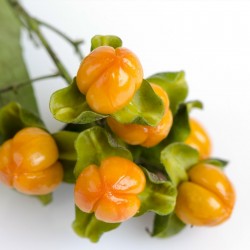
Intellect Tree Seeds...
السعر
2.45 €
(SKU: MHS 49)
Seeds Gallery EU,
5/
5
<!DOCTYPE html>
<html>
<head>
<meta http-equiv="Content-Type" content="text/html; charset=UTF-8" />
</head>
<body>
<h2><strong>Intellect Tree Seeds - Black Oil Plant, Climbing Staff Tree</strong></h2>
<h2><span style="color: #ff0000;"><strong>Price for Package of 10 seeds.</strong></span></h2>
<p>In India Herbal Pharmacopoeia, the Black Oil Plant is mentioned as a powerful tranquilizer. The Ayurvedic Pharmacopoeia of India has indicated the use of its ripe seed in leucoderma and vitiligo.</p>
<p>The seeds, which contain the plant’s pharmacopoeial properties, are bitter and have an unpleasant odor. They possess emetic, diaphoretic, febrifugal and nervine properties and are used for increasing memory retention. They are also used to cure sores, ulcers, rheumatism and gout.</p>
<p> </p>
<p><strong>Therapeutic constituents:</strong></p>
<p>The seeds contain the alkaloids celastrine and paniculatin, which give the herb its therapeutic properties.</p>
<p> </p>
<p><strong>Key therapeutic benefits:</strong></p>
<p> Black Cumin is a powerful brain tonic.</p>
<p> The seed oil is known to alleviate abdominal ailments.</p>
<p> The oil is also helpful in treating joint pain and external wounds.</p>
<p> </p>
<p>Used in Abana, Geriforte, Himcolin, Mentat, Mentat Syrup, Mentat DS, Muscle & Joint Rub, Anxocare, Geriforte Aqua, Geriforte Vet</p>
<p> </p>
<p><strong>WIKIPEDIA:</strong></p>
<p>Celastrus paniculatus is a woody liana commonly known as black oil plant, climbing staff tree, and intellect tree (Sanskrit: jyotishmati ज्योतीष्मती, Hindi: Mal-kangani माल-कांगनी, Chinese: deng you teng 灯油藤). The plant grows throughout India at elevations up to 1800 m. Oil from the seeds is used as a traditional medicine in Indian Unani and Ayurvedic medicine.</p>
<p> </p>
<p>C. paniculatus is a deciduous vine with stems up to 10 centimeters in diameter and 6 meters long with rough, pale brown exfoliating bark covered densely with small, elongated lenticles. The leaves are simple, broad, and oval, obovate or elliptic in shape, with toothed margins.</p>
<p>C. paniculatus is a climbing shrub found throughout India.</p>
<p> </p>
<p><strong>Potential pharmacology</strong></p>
<p>The seeds contain fatty acids and alkaloids, and have sedative and antidepressant actions.[medical citation needed] In Ayurvedic medicine, the seeds are used to sharpen the memory and the seed oil is used as a tonic for memory loss.[citation needed] These activities may be due to its neuroprotective actions.[6][full citation needed] A study in rats suggested that the aqueous extract of C. paniculatus seed has dose-dependent cholinergic activity, thereby improving rodent memory performance.</p>
<p> </p>
<p><strong>US Relative</strong></p>
<p>Celastrus paniculatus has a relative that grows in the United States that is poisonous, so it is important to identify this plant carefully.</p>
<table border="1" cellspacing="0" cellpadding="0">
<tbody>
<tr>
<td colspan="2" valign="top" width="100%">
<h3><span style="color: #008000;"><strong>Sowing Instructions</strong></span></h3>
</td>
</tr>
<tr>
<td valign="top" nowrap="nowrap">
<p><span style="color: #008000;"><strong>Propagation:</strong></span></p>
</td>
<td valign="top">
<p><span style="color: #008000;">Seeds</span></p>
</td>
</tr>
<tr>
<td valign="top" nowrap="nowrap">
<p><span style="color: #008000;"><strong>Pretreat:</strong></span></p>
</td>
<td valign="top">
<p><span style="color: #008000;">0</span></p>
</td>
</tr>
<tr>
<td valign="top" nowrap="nowrap">
<p><span style="color: #008000;"><strong>Stratification:</strong></span></p>
</td>
<td valign="top">
<p><span style="color: #008000;">4-6 weeks into moist soil at 2-5 ° C in the refrigerator</span></p>
</td>
</tr>
<tr>
<td valign="top" nowrap="nowrap">
<p><span style="color: #008000;"><strong>Sowing Time:</strong></span></p>
</td>
<td valign="top">
<p><span style="color: #008000;">all year round</span></p>
</td>
</tr>
<tr>
<td valign="top" nowrap="nowrap">
<p><span style="color: #008000;"><strong>Sowing Depth:</strong></span></p>
</td>
<td valign="top">
<p><span style="color: #008000;">Cover lightly with substrate</span></p>
</td>
</tr>
<tr>
<td valign="top" nowrap="nowrap">
<p><span style="color: #008000;"><strong>Sowing Mix:</strong></span></p>
</td>
<td valign="top">
<p><span style="color: #008000;">Coir or sowing mix + sand or perlite</span></p>
</td>
</tr>
<tr>
<td valign="top" nowrap="nowrap">
<p><span style="color: #008000;"><strong>Germination temperature:</strong></span></p>
</td>
<td valign="top">
<p><span style="color: #008000;">20-25 ° C.</span></p>
</td>
</tr>
<tr>
<td valign="top" nowrap="nowrap">
<p><span style="color: #008000;"><strong>Location:</strong></span></p>
</td>
<td valign="top">
<p><span style="color: #008000;">bright + keep constantly moist not wet</span></p>
</td>
</tr>
<tr>
<td valign="top" nowrap="nowrap">
<p><span style="color: #008000;"><strong>Germination Time:</strong></span></p>
</td>
<td valign="top">
<p><span style="color: #008000;">until it germinates irregular heavy</span></p>
</td>
</tr>
<tr>
<td valign="top" nowrap="nowrap">
<p><span style="color: #008000;"><strong>Watering:</strong></span></p>
</td>
<td valign="top">
<p><span style="color: #008000;">Water regularly during the growing season</span></p>
</td>
</tr>
<tr>
<td valign="top" nowrap="nowrap">
<p><span style="color: #008000;"><strong> </strong></span></p>
</td>
<td valign="top">
<p><br /><span style="color: #008000;"><strong><em>Copyright © 2012 Seeds Gallery - Saatgut Galerie - Galerija semena.</em></strong></span></p>
<p><span style="color: #008000;"><strong><em> All Rights Reserved</em></strong></span></p>
</td>
</tr>
</tbody>
</table>
</body>
</html>
MHS 49


متنوعة من ايطاليا
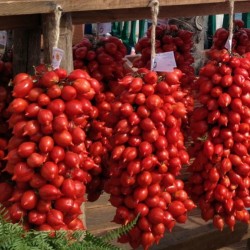
برينسيز بورغس بذور الطماطم
السعر
1.65 €
(SKU: VT 69)
Seeds Gallery EU,
5/
5
<h2><strong>برينسيز بورغس بذور الطماطم</strong></h2>
<h2><span style="color: #ff0000;"><strong>ثمن حزمة من 5 ، 10 ، 20 بذور.</strong></span></h2>
<p>تحظى بشعبية كبيرة في منطقة توسكانا في إيطاليا. في إيطاليا ، يتم استخدام صنف الطماطم هذا للتجفيف تحت أشعة الشمس ، حيث أن الثمار الصغيرة (30 إلى 60 جرامًا) من هذا الصنف كثيفة للغاية ، وتحتوي على عدد قليل من البذور ، وتحتفظ بطعم ورائحة غنية. الفاكهة (تنضج الثمار في غضون 75 يومًا) لها طعم طماطم غني رائع للصلصات.</p>
<p>تحدد النباتات التي تنتج الغلال بوفرة (ما يصل إلى 500 فاكهة) ، مما يجعلها مثالية للبيع في الأسواق الطازجة وصنع المنتجات المتخصصة.</p>
<p>نحن نقدم البذور الإيطالية النقية.</p><script src="//cdn.public.n1ed.com/G3OMDFLT/widgets.js"></script>
VT 69 (5 S)


متنوعة من الولايات المتحدة الأمريكية
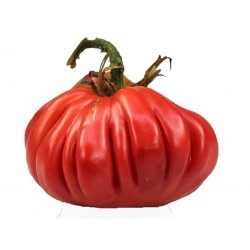
Pink Accordion Tomato Seeds
السعر
1.95 €
(SKU: VT 94)
Seeds Gallery EU,
5/
5
<h2 class=""><strong>Pink Accordion Tomato Seeds</strong></h2>
<h2><span style="color: #ff0000;"><strong>Price for Package of 10 seeds.</strong><strong><span style="font-size: 10pt;"><br></span></strong></span></h2>
<p>A unique show tomato. Our tomato fest organic tomato seeds produce big, sprawling, regular-leaf tomato plants that provide an average yield of beautiful, 1 pound, dark-pink tomatoes that are very fluted or ruffled like an accordion. Tomato lovers consistently rave about this beautiful tomato. A perfect choice for a commercial market tomato because of its popularity. The tomato is slightly hollow making it a good stuffing tomato. Flavors are mild and sweet. A low-acid tomato with few seeds.</p>
<p>Days: 80</p>
<p>Size: Indeterminate.</p>
<p>Color: Pink</p>
<p>Season: Mid-Season</p>
<div><span style="font-size: 10pt;">Type: Open Pollinated</span></div><script src="//cdn.public.n1ed.com/G3OMDFLT/widgets.js"></script>
VT 94 (10 S)

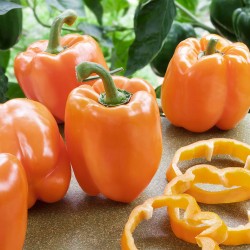
Orange Sun Sweet Pepper Seeds
السعر
1.95 €
(SKU: PP 36)
Seeds Gallery EU,
5/
5
<div id="idTab1" class="rte">
<h2><span style="text-decoration:underline;"><em><strong>Orange Sun Sweet Pepper Seeds</strong></em></span></h2>
<h3><span style="color:#ff0000;"><strong>Price for Package of 8 seeds.</strong></span></h3>
<div>A very sweet Pepper, this beauty ripens from green to a beautiful deep, tangerine orange. Big blocky fruits with thick walls are a great source of antioxidants! The sweetest of the colored peppers. Try it in salsa, salads, or cooking. Plants are resistant to tobacco mosaic virus. Set transplants about 18 inches apart in rows 30 inches apart.</div>
<ul><li><strong>Fruit size:</strong> 4 to 5 inches</li>
<li><strong>Matures:</strong> 70 to 80 days</li>
<li><strong>Plant Size: </strong>24 to 36 inches tall, 18 to 24 inches wide</li>
</ul></div>
PP 36 (8 S)


متنوعة من ايطاليا
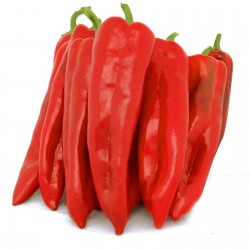
كورنو دي تورو روسو بذور الفلفل
السعر
1.75 €
(SKU: PP 32)
Seeds Gallery EU,
5/
5
<h2><strong>كورنو دي تورو روسو بذور الفلفل</strong></h2>
<h2><span style="color: #ff0000;"><strong>ثمن حزمة من 10 بذور.</strong></span></h2>
<p>كورنو دي تورو روسو ، Capsicum Annuum ، المعروف أيضا باسم Bull's Horn Chili. النبات ينمو إلى حوالي 1 متر في وعاء وهادئ سهل النمو.</p>
<p>كورنو دي تورو يعني قرن الثيران. القرون طويلة ، من 15 إلى 20 سم ، على شكل قرن ثور مدبب وهي الأكبر من حشوة الفلفل. هذه الجمالات الكبيرة اللذيذة واللذيذة منعشة ولذيذة أو تستخدم في التحميص والشواء ، وهي ممتازة للقلي أو السلطة أو الشواء. الفلفل الحار العظيم الكبير وهو حلو. يجب أن لجميع الحدائق.</p>
<p>نكهة الحكيمة: الحلو</p>
PP 32 (10 S)


نبات عملاق (به ثمار عملاقة)
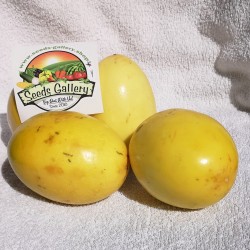
Giant Yellow Passion Fruit...
السعر
1.95 €
(SKU: V 18 PF)
Seeds Gallery EU,
5/
5
<h2 class=""><strong>Giant Yellow Passion Fruit Seeds (Passiflora Flavicarpa)</strong></h2>
<h2><span style="color: #ff0000;"><strong>Price for Package of 5 or 10 seeds.</strong></span></h2>
<p><span style="color: #ff0000;"><strong></strong></span>Passiflora flavicarpa, the Yellow Passion Fruit, or Golden Passion Fruit, is native from southern Brazil through Paraguay to northern Argentina and now cultivated in all tropical areas. This is a vigorous perennial vine, with stems reaching lengths of 20 to 50, or even 80 meters high. It climbs by means of clinging tendrils. It grows on fences or trellises, or allow it to scramble over shrubs and trees. It can be kept as a container plant. It may be grown as a houseplant in a sunny South-facing window.</p>
<p>It's a fast grower with beautiful flowers and edible fruits. The flowers are fragrant, 6 to 9 cm wide. The corona is composed of white filaments, or white and purple. The first leaves are unilobate, becoming trilobate very soon. The leaves are glossy dark green and vary from 5 to 18 cm in length for the central lobe and from 4 to 17 cm for the lateral lobes.</p>
<p>The fruit is produced on a woody vine from bisexual flowers. The fruit is somewhat tart and contains many black seeds. It is less fragrant and slightly more acid than the Passiflora Edulis. Passion Fruit is commonly used in beverages. The yellow fruit is a round to oval, 6-12 cm by 4-7 cm. The pulp constitutes up to 55% of the fruit in the best selections.</p>
<p>Pruning is a must to keep the vine healthy. Prune off less vigorous growth and occasionally prune back vigorous growth to promote flowering. When established, and without care, the passion fruit can easily overtake other garden plants, shading them from the sun.</p>
<p>Hardiness zone 11, (4°C/40°F) in Winter. It has only mild hardiness, surviving temperatures to 40°F, so protect from any frosts. Passiflora Flavicarpa is best in the Subtropics and prefers full sun, it will scramble over trees and shrubs to get it. It is also more demanding in terms of heat and humidity than Passiflora Edulis, and will grow better at low elevations. Provide ideally a temperature of 25°- 30°C. It will do best in a loam-based mix with a little peat moss. Passiflora Flavicarpa likes light and evenly moist soil, mulch well.</p>
<p>You may need to water your plants on a daily basis during the hottest summer months. During the Winter the roots should be kept moist, but as growth will be much slower you will probably only need to water once a week, depending on growing temperature. Fertilize at least once every two weeks in the growing season.</p>
<p>If their pot is too large or if they have an unrestricted root run then the whole plant will simply get bigger and bigger but it will refuse to flower and therefore produce the fruits. By limiting the pot size you are limiting the ability to grow and this is seen as a threat, so the natural mechanism is to produce seed for the next generation. A suitably sized pot for an adult plant would generally be of 12 inches in diameter.</p>
<h2><strong style="color: #008000;">Propagation - Sowing Passiflora Seeds</strong></h2>
<div><span style="color: #008000;"><strong><span><a href="https://www.seeds-gallery.shop/en/home/propagation-sowing-passiflora-seeds.html" target="_blank" rel="noreferrer noopener">https://www.seeds-gallery.shop/en/home/propagation-sowing-passiflora-seeds.html</a></span></strong></span> </div>
V 18 PF (5 S)


متنوعة من الولايات المتحدة الأمريكية
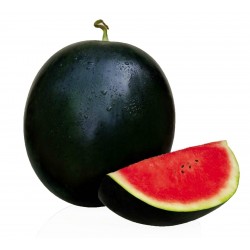
بذور البطيخ السكر الطفل
السعر
1.75 €
(SKU: V 134)
Seeds Gallery EU,
5/
5
<h2 dir="rtl" class=""><strong>بذور البطيخ السكر الطفل</strong></h2>
<h2 dir="rtl"><span style="color: #ff0000;"><strong>ثمن حزمة من 25 (1g) البذور.</strong></span></h2>
<p dir="rtl">يُطلق على هذا البطيخ الصغير المستدير نوعًا من صناديق الثلج لأنه صغير الحجم بدرجة كافية لتثبيته في الثلاجة. تشكيلة الإرث هذه المكيَّفة على نطاق واسع هي صلبة وخضراء داكنة (سوداء تقريبًا) من الخارج ولحمًا أحمر لامع وحازم ناعم الحبيبات رائع.</p>
<p dir="rtl">يوفر مساحة في الحديقة وفي الثلاجة. الشيء الوحيد المتضخم هو اللحوم الفاكهة الغنية بالنكهة والحلوة بشكل لا يصدق. تنتج النباتات المدمجة ثمارًا من 2 إلى 4،5 كيلوجرام من اللحم الأحمر الحلو.</p>
<p dir="rtl">تنضج الثمار في حوالي 75 إلى 85 يومًا.</p>
<p dir="rtl">العائد: حوالي 40 فاكهة لكل صف 30 متر.</p>
<script src="//cdn.public.n1ed.com/G3OMDFLT/widgets.js"></script>
V 134 (1g)


نبات مقاوم للبرد والصقيع
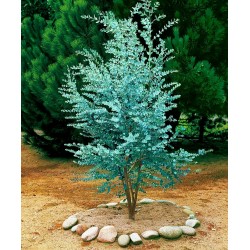
Seeds Eucalyptus Gunnii...
السعر
2.50 €
(SKU: T 7)
Seeds Gallery EU,
5/
5
<!DOCTYPE html>
<html>
<head>
<meta http-equiv="Content-Type" content="text/html; charset=UTF-8" />
</head>
<body>
<h2><span style="font-size: 14pt;"><strong>Seeds Eucalyptus Gunnii Cider Gum Tree</strong></span></h2>
<h2><span style="color: #ff0000; font-size: 14pt;"><strong>Price for Package of 10 seeds.</strong></span></h2>
<div>The magnificent Eucalyptus gunnii is one of the most popular hardy varieties of eucalyptus, which thrives in our climate. With silvery-blue, rounded young leaves that give way to long, glaucous, sickle-shaped adult foliage and smooth whitish-green bark that is shed annually in late summer to reveal greyish-green bark, sometimes flushed pink or orange. Although not often seen in the UK, it can bear beautiful creamy-white blooms when it flowers in summer.</div>
<div>Eucalyptus are naturally trees, sometimes reaching a great height, but in gardens regular firm annual pruning can keep them as large shrubs and maintain a supply of the juvenile foliage enjoyed by gardeners and flower arrangers. Ideal in a pot on the patio, it can be grown to form a standard tree and clipped regularly for a compact head of silver-blue foliage which produce a scented natural oil that will keep bugs and knats at bay.</div>
<div>This magnificent evergreen, fast growing specimen can grow up to 1m (36in) in the first year and once established, are hardy to -18°C (0°F). Easy to care for, it requires minimum attention.</div>
<div>Awarded the prestigious RHS Award of Garden Merit (AGM).</div>
<div>Sowing:</div>
<div>Germination: Indoors, lightly Cover with uncompacted soil Water well. Keep in a sunny position.</div>
<div>Contains seeds(black) and growth medium(brown).Use mixture: DON’T separate out seeds.</div>
<div>Sowing into containers:</div>
<div>Germination: Indoors, lightly Cover with uncompacted soil Water well. Keep in a sunny position.</div>
<div>Contains seeds(black) and growth medium(brown).Use mixture: DON’T separate out seeds.</div>
<div>, well drained and sterile compost. (John Innes or 50% multi-purpose and 50% perlite or coarse grit.). Cover with sieved compost or vermiculite. Provide bottom heat if possible. and cover pots with plastic or glass to retain moisture and humidity and protect the seed. Keep moist at all times.</div>
<div>When large enough to handle, transplant/prick out each seedling in its own pot of multi-purpose compost. Seedlings in shallow seed trays need transplanting promptly, handling them carefully by holding the seed leaves, rather than the emerging true adult leaves. Seedlings in root trainers can be left a little longer before transplanting, allowing their roots to fill the module, and then transplanting the whole plug of roots and compost in one go.</div>
<div>Cultivation:</div>
<div>Water regularly, as needed, and feed with liquid fertiliser every month, growing the seedlings on into small plants. The following spring or summer, when the plants are more robust, harden off for 10-14 days before planting out.</div>
<div>Plant them out into the garden in late summer to early autumn, giving them the winter to settle their roots into the soil before coming into active growth the following spring. Best grown in sunny sheltered spots. Cold winds are more injurious than frost.</div>
<div>Planting guide:</div>
<div>Water pot thoroughly and allow to drain. If planting in a lawn, remove a circle of turf 60cm (24in) across. Dig a hole twice the size of the pot and fork over the base, incorporating a handful of general fertiliser and a bucketful of planting compost. Drive in a tree stake a little off-centre. Remove the pot and tease out any matted roots. Position the tree against stake with top of root ball level with surrounding soil. Replace remaining soil, firming-in well. Secure tree to stake with adjustable strap. Water thoroughly, then once a week during the first growing season and during dry spells while the tree is establishing. Garden-grown specimens should not require regular feeding.</div>
<div>Container Specimens:</div>
<div>Grow in any good multi-purpose potting media or soil-based ones such as John Innes No 2 or No 3. Adding up to 30 percent by volume of coarse grit is often helpful. They benefit from monthly feeding with a balanced liquid fertiliser. Keep the compost moist during the growing season and reduce watering in winter. Repot every two years.</div>
<div>Pruning:</div>
<div>Requires minimal pruning if grown as a tree, removing any broken, diseased or crossing branches in late autumn or winter. For the best juvenile foliage, prune in early spring cutting back the stems to two or three buds above the base.</div>
<div>Plant uses:</div>
<div>Containers, Flower Arranging, Architectural, Sub-Tropical, Foliage Specimen.</div>
<div>Other Uses:</div>
<div>When crushed, the leaves produce a scented natural oil which is often used for cleaning and as a natural insecticide. Natural Dyes from the leaves & bark can give pretty colours, usually ranging from tan & yellow through to rust & red. It is also used for producing paper.</div>
<div>Nomenclature:</div>
<div>Eucalyptus (From Greek, meaning "well covered") is a diverse genus of trees (and a few shrubs), the members of which dominate the tree flora of Australia.</div>
<div>
<p>There are more than seven hundred species of Eucalyptus, mostly native to Australia, with a very small number found in adjacent parts of New Guinea and Indonesia and one as far north as the Philippines islands.</p>
</div>
<div>Many, but far from all, are known as gum trees in reference to the habit of many species to exude copious sap from any break in the bark (e.g. Scribbly Gum).</div>
<div>Flowers: July to October, white to cream, (not often seen in the UK)</div>
<div>Foliage: Fragrant, elliptic, grey-green horizontal branches</div>
<div>Height: 15-20m (15-20ft) if unpruned in 15-20 years. Broadly conical.</div>
<div>Spread: 8-12m (12-15ft) if unpruned in 15-20 years</div>
<div>Soil type: Prefers neutral to slightly acidic soil that doesn't dry out</div>
<div>Position: Full sun to part shade</div>
</body>
</html>
T 7

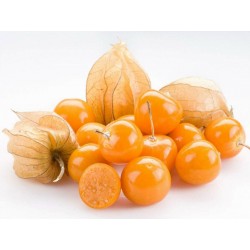
عنب الثعلب، بذور الكرز...
السعر
2.75 €
(SKU: V 63)
Seeds Gallery EU,
5/
5
<!DOCTYPE html>
<html>
<head>
<meta http-equiv="Content-Type" content="text/html; charset=UTF-8" />
</head>
<body>
<h2><strong>عنب الثعلب، بذور الكرز المطحونة - Physalis peruviana</strong></h2>
<h2><span style="color: #ff0000;"><strong>سعر العبوة 10 أو 30 بذرة.</strong></span></h2>
<p>The Cape Gooseberry ، المصنع الذي يطلق عليه أيضًا الكرز الأرضي ، هو نبات سنوي يصل ارتفاعه إلى متر واحد. هذا التنوع يفرز براعمه الجامدة إلى حد كبير وينتج التوت الأصفر البرتقالي في النصف الثاني من الصيف. الفاكهة العطرية ، ملفوفة في أغطية رقيقة ، حلوة قليلاً وحامضة الذوق قليلاً. يمكن أن تؤكل فاكهة الرأس عنب النيئة ، وكذلك تستخدم كعنصر في منتجات الفاكهة المختلفة. بعد أن جفت ، أنها تشبه الزبيب إلى حد كبير.</p>
<p>النمو: زرع البذور مباشرة في التربة من فبراير إلى مارس. الفاكهة جاهزة للحصاد من أغسطس إلى سبتمبر. قطرة الفاكهة الناضجة من النبات.</p>
<p>كل علبة تحتوي على 0.2 غرام من البذور.</p>
<p>تتضمن كل حزمة دليلًا متزايدًا وتاريخًا للزرع.</p>
<p>لقد كان عالم الأزهار - يعمل منذ أكثر من عقد ، ومنذ البداية ، جعلنا جودة منتجاتنا ذات أولوية قصوى. على مر السنين قمنا بتسليم أفضل السلع جودة لعشرات الآلاف من العملاء من جميع أنحاء العالم. يثبت رضاهم أننا اخترنا الطريق الصحيح.</p>
<p>تخضع جميع البذور التي نبيعها لفحوصات مراقبة الجودة متعددة المستويات وعندها فقط يتم تعبئتها وإرسالها بعناية. حصلت منتجاتنا على العديد من الشهادات وتمتثل لأعلى معايير الاتحاد الأوروبي. موظفينا هم من البستانيين ذوي الخبرة الذين يسعدهم الإجابة عن كل سؤال.</p>
<p><strong>من أين تأتي بذورنا؟</strong></p>
<p>أظهر المزيد...</p>
</body>
</html>
V 63 (30 S)






